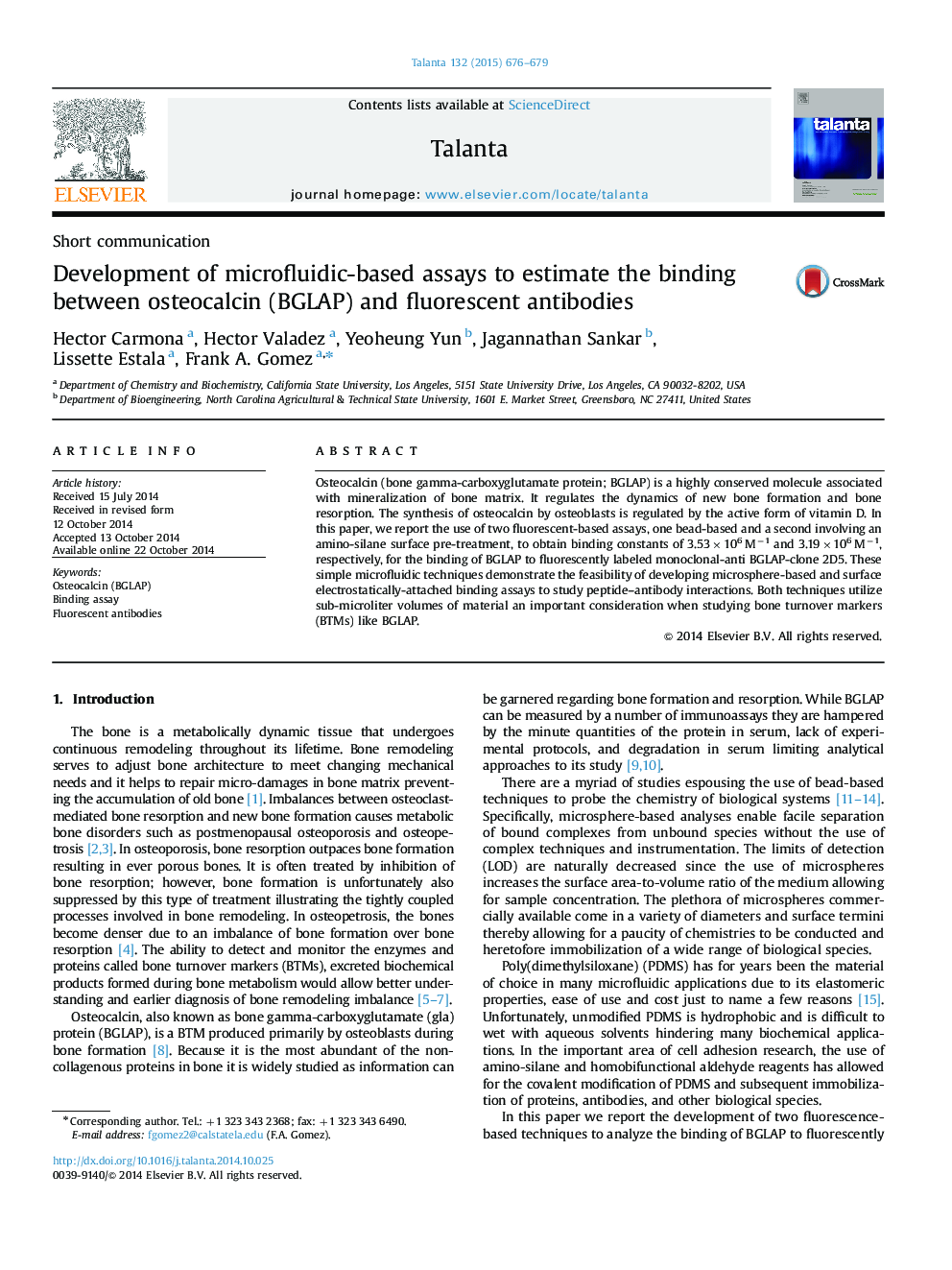| کد مقاله | کد نشریه | سال انتشار | مقاله انگلیسی | نسخه تمام متن |
|---|---|---|---|---|
| 1242072 | 1495803 | 2015 | 4 صفحه PDF | دانلود رایگان |

• Binding constants were measured for osteocalcin and a fluorescently labeled antibody.
• Fluorescence was the detection technique used to obtain binding constants.
• The assays are either bead-based or involve an amino-silane surface pre-treatment.
• The techniques are microfluidic-based and require minute quantities of material.
Osteocalcin (bone gamma-carboxyglutamate protein; BGLAP) is a highly conserved molecule associated with mineralization of bone matrix. It regulates the dynamics of new bone formation and bone resorption. The synthesis of osteocalcin by osteoblasts is regulated by the active form of vitamin D. In this paper, we report the use of two fluorescent-based assays, one bead-based and a second involving an amino-silane surface pre-treatment, to obtain binding constants of 3.53×106 M−1 and 3.19×106 M−1, respectively, for the binding of BGLAP to fluorescently labeled monoclonal-anti BGLAP-clone 2D5. These simple microfluidic techniques demonstrate the feasibility of developing microsphere-based and surface electrostatically-attached binding assays to study peptide–antibody interactions. Both techniques utilize sub-microliter volumes of material an important consideration when studying bone turnover markers (BTMs) like BGLAP.
Binding of increasing concentrations of fluorescently labeled anti-BGLAP clone 2D5 antibody to osteocalcin electrostatically attached to the microfluidic channels. Figure optionsDownload as PowerPoint slide
Journal: Talanta - Volume 132, 15 January 2015, Pages 676–679